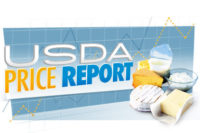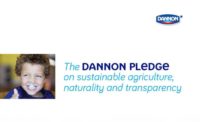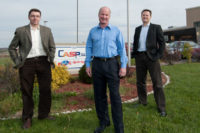Dannon is picking apart the nutritional and dietary requirements of various age groups to uncover what the marketing team calls the “needs states” of consumers. Older consumers need calcium, vitamins and minerals, for instance. Those watching their weight need low-calorie foods in portion-control packages.
A yogurt set to launch in July is a new protein-fortified product with cereal inclusions. It will be positioned as a breakfast food. A 6-ounce cup of Activia Breakfast Blends has twice the protein of a conventional yogurt, the company states. (Activia single-serve SKUs contain 4 ounces.) It will be sold in banana bread and apple cinnamon flavors, and is expected “to deliver a more convenient, satisfying and nutritious yogurt breakfast option,” Neuwirth said.
Dannon also sees opportunities to develop products for children who have outgrown Danimals. Packages for ’tweens and young adults would have to be of the grab-and-go variety, allowing the youngsters to eat yogurt away from home. Another possibility is to develop an indulgent yogurt to be eaten after dinner. In some European nations, yogurt is a dessert food, Lopez-May said. In the United States, it is primarily eaten as a snack.
Besides satisfying consumer needs, Dannon is addressing the needs of its customers — retailers. Dannon wants to make yogurt easier to buy, and that means improved “shop-ability,” Lopez-May told me. There needs to be better segmentation and better assortments in the dairy case at retail. The consumer has about 90 seconds to make a decision, says Fuster, the senior vp of marketing. Too often, there is just one facing of a SKU, so the visibility needs to be improved. Multipacks, rather than single-serve packages, are more convenient for the consumer to purchase.
Retailers are convinced of the value of yogurt, Valle said. The total market was up nearly 9% (as measured by dollar sales) in the 52 weeks ended March 18, according to SymphonyIRI, a Chicago-based research firm. Unit sales, however, were off about 3%. Yogurt is among the top 10 foods showing the most growth, said Fuster.
Even though Valle says the yogurt case is growing two feet per year, he still asks the question: How can we find more space?
Dairy’s brightest star
Fuster said young urban males were the first to eat Greek yogurt because of its high protein content. Then it became the darling of foodies before becoming mainstream. It remains an adult product, not a children’s one, Fuster said.
Greek yogurt is the star, not only in the cultured dairy category, but also in the dairy foods universe. News reports cite Euromonitor International statistics showing that Greek yogurt sales grew 64% last year, compared to just slight growth for other yogurt products.
In 2011, Dannon re-branded its Greek yogurt offering and took on the name Oikos, which also is used by organic-dairy processor Stonyfield of Londonderry, N.H. (Danone has a majority ownership interest in Stonyfield.) Dannon’s Oikos is a conventional yogurt; Stonyfield’s Oikos is organic.
Based on sales data, Oikos is the No. 2 brand and rising in the Greek yogurt category, behind Chobani and ahead of Fage. It is a competitive marketplace. Kraft exited the field this year, shutting down its Athenos yogurt brand. Heavyweight food processor General Mills makes a Greek-style yogurt under its Yoplait brand. If that isn’t enough competition, a report from Mintel weighs in with: “Even private label could compete if it made a premium Greek-style yogurt.”







